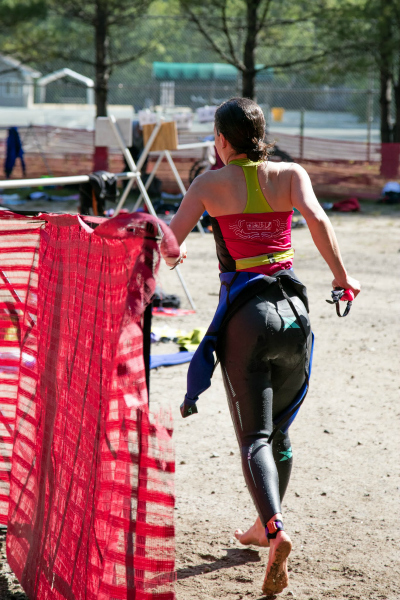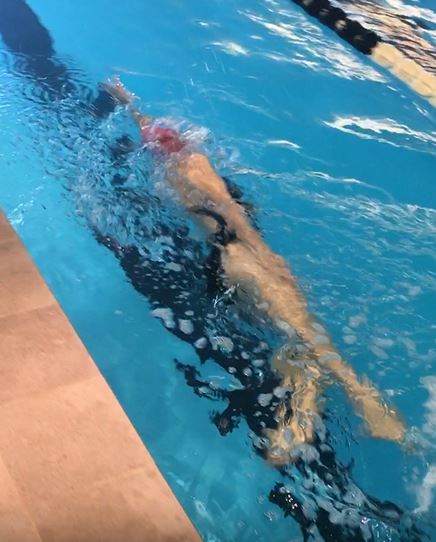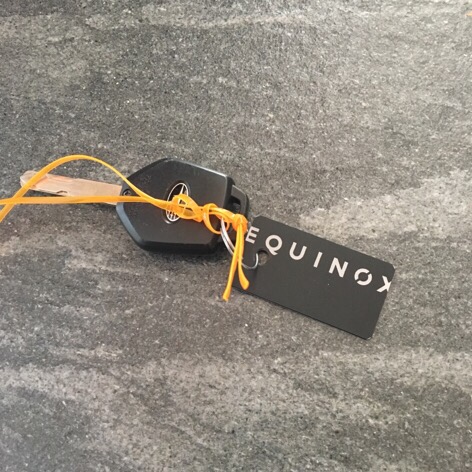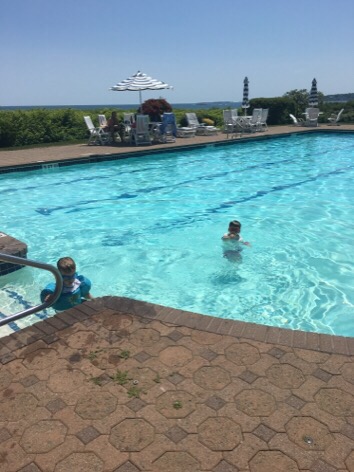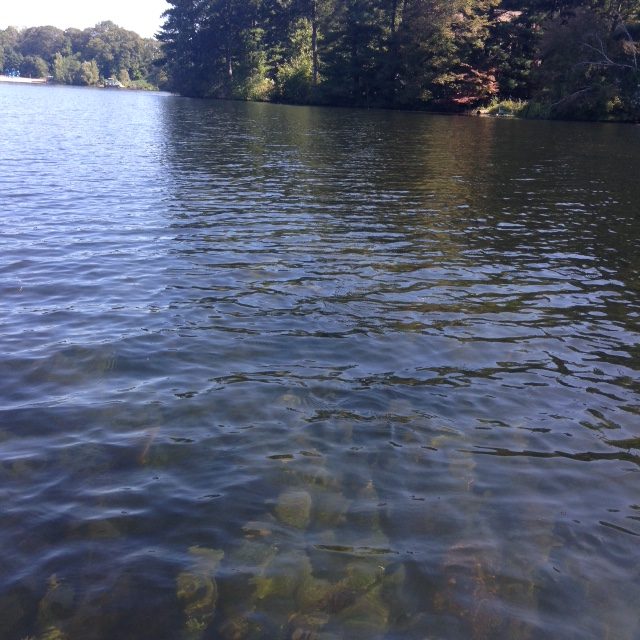I learned so much from the Sebago Lake Triathlon (my first tri!) that I’m going to break it into three separate posts. (The trick will be remembering to re-read them all before my next triathlon!)
First… the swim.
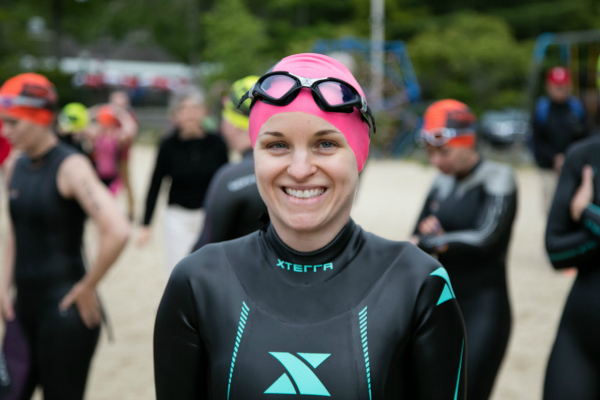
The swim was the whole reason I wanted to do this triathlon. I needed a break through. It’s too easy in the pool to take a break every length; I have been swimming 3 times a week for several months, but still do most of my swimming 25 yards at a time. I’d built up strength, but wasn’t great at practicing endurance.
What better way to practice endurance than head out in a lake and swim for the buoys in a supportive race environment? No standing up halfway through; all breaks are still floating, and if you’re floating, you might as well kick. If you’re kicking, you might as well backstroke and get it over with.
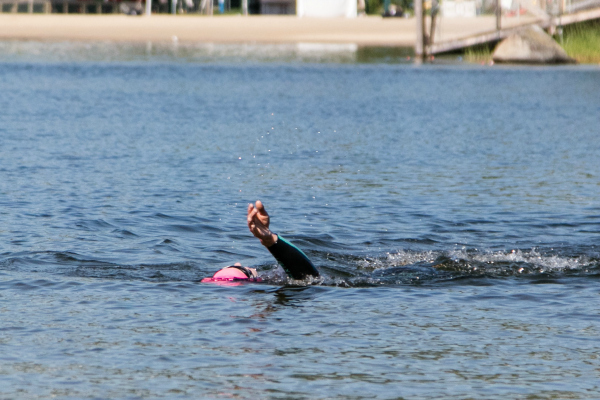
With kayaks on the course and a buoyant wetsuit, it seemed like just enough risk to make me feel alive without being dangerous.
And yes, I felt pretty darn alive rushing into that freezing cold water with a crowd of people and heading out into the lake, knowing it’d be the furthest open water swim of my life.
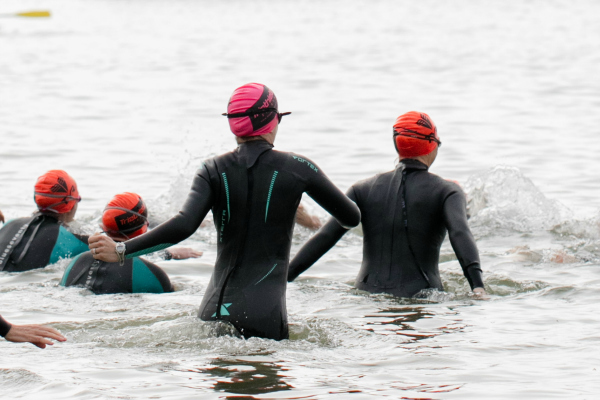
I started out doing freestyle, was shocked to discover I was keeping up with people, and then got kicked in the face and swallowed lake water. It didn’t hurt, but it’s startling, and it was enough to put me a little behind the pack and switch to backstroke.
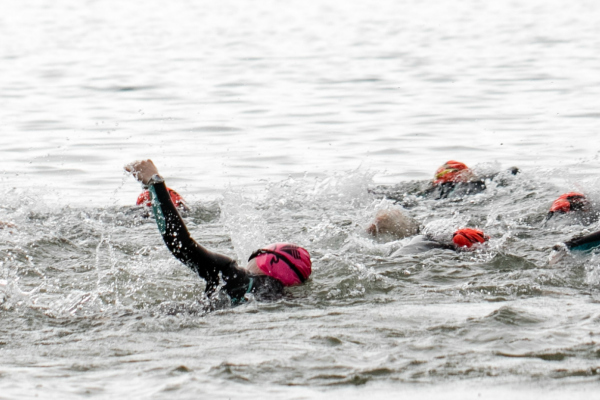
The trouble with backstroking behind the pack of swimmers is it’s hard to gauge where you’re going unless you stop and look around. I lost time and energy switching from backstroke to treading water so I could look around, and ended up zigzagging all over the place.
My running mantra when I’m struggling has always been “just keep going”. This doesn’t work very well when you happen to be swimming in the wrong direction.
There were times when I knew I should look to make sure I was going the right way, but the thought of changing position and treading water made me feel panicked, so I just kept going.
The wrong way.
I went so far off course the kayakers had to come escort me to the finish.
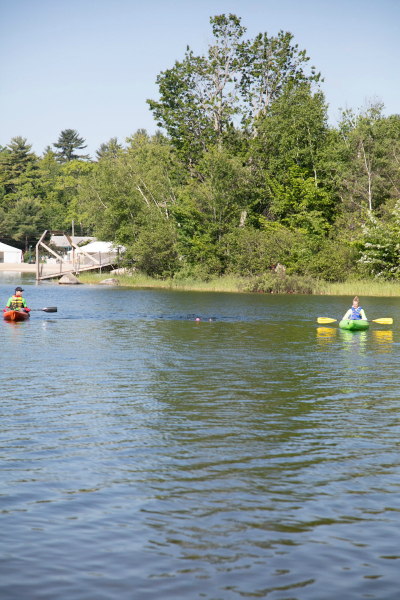
I probably swam over half a mile.
But I made it.
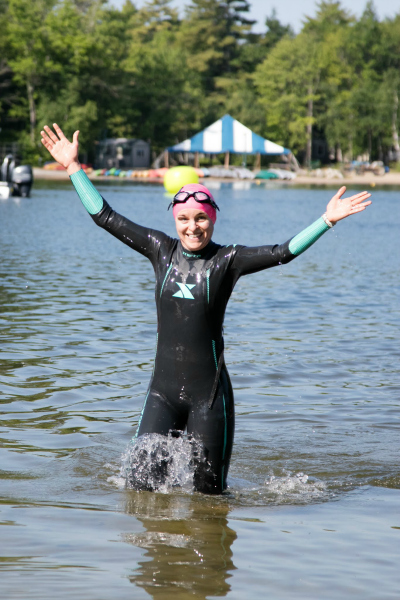
Whenever you’re towards the end of a race, maybe especially a swim, people are going to be looking at your face and worrying about how you’re doing and how you feel.
I knew was the last one out of the water, so, yeah, I threw my hands up… to great laughter and applause.
I let every ounce of excitement and pride that I made it out of the water show on my face.
In the photo below, you can see one of the kayakers who redirected me about 10 times smiling and clapping as I exited the water. I felt so bad taking extra time from the race volunteers, but Greg said the second to last person exited the water only about thirty seconds before me… and at least I closed the swim course down with a smile.
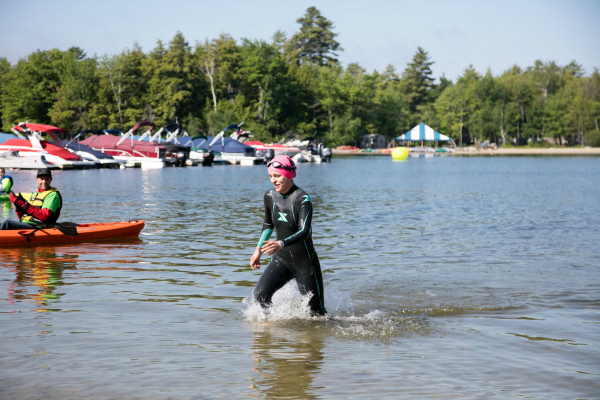
There were some silver linings to being last. It shows how far outside my comfort zone I was, and how much room I have for improvement. That I’m at an exciting place in my journey.
Besides, I was there to learn, and I did.
What did I learn?
Sighting is important. If you’re not in the pack, it’s extra important to continue checking and making sure you’re going the right direction. No one wants to swim extra distance.
My swim instructor showed me how to pick my head up in front crawl after I breathe and look around so I don’t need to go vertical and tread water, a major waste of speed and energy.
If I can roll easily into backstroke when I want more air, then back to front crawl looking around occasionally in between strokes, I’ll be able to stay stream-lined in the water, continuously moving forward, and checking easily to see where I’m going.
I would not have known to work on these strategies if I hadn’t done this unplanned first triathlon!
Practice in your wetsuit. It can make you feel like it’s hard to get a breath even though if you pay attention you’re getting plenty of air. The more time you spend in the water in your wetsuit before your race, the better. Swim hard to get out of breath in your suit, and then practice kicking on your back and relaxing your breathing. It’s important to learn before your race that you can catch your breath in a tight wetsuit. I had to calm myself down quite a few times in the water, and focus on the fact that I was breathing in and out, and I could in fact keep going.
It’s over fast. Even being last out of the water, I was done in less than 18 minutes. If I’d watched where I was going, I suspect I could have finished in 13 or 14. If you feel worried, just keep going in the moment. A little more, a little more, ten strokes of front, ten strokes of back, and it’ll be over before you know it.
It’s fine to backstroke: Plenty of people were doing it, and it’s easy to space yourself to the side or towards the back if you’re truly worried about bumping into someone. But honestly, people doing the front crawl were swimming over each other just as aggressively since they’re not able to look straight ahead either. I was so worried about backstroking, but it was the only way I could have finished this race, and it had no negative impact on any of the other participants.
Next post: I’ll share what I learned on the bike 🙂
